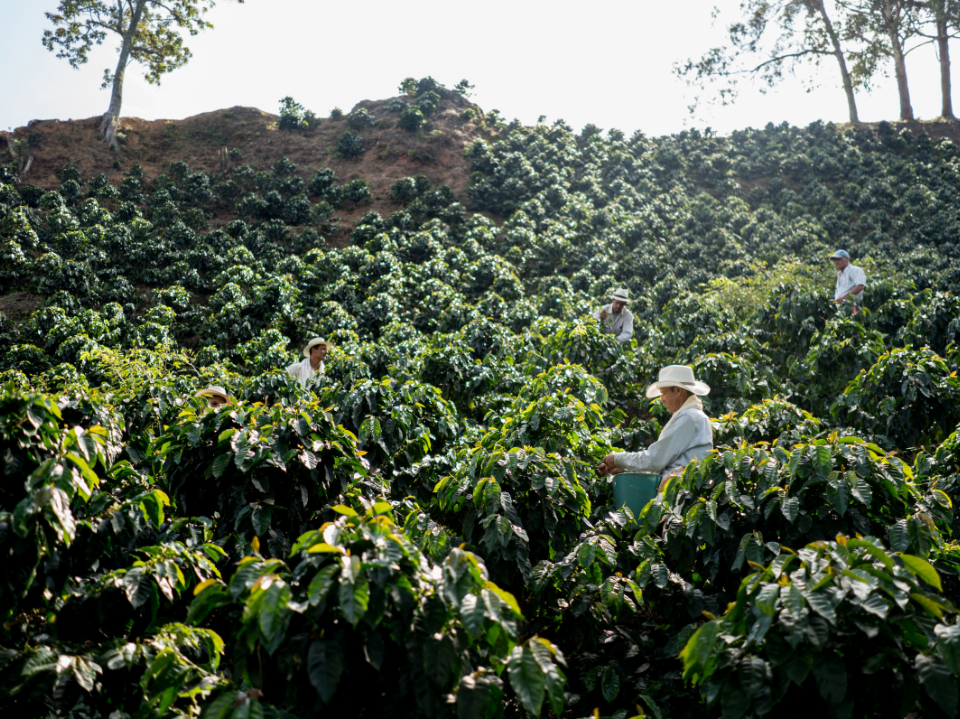If you are an avid coffee drinker and love trying new coffee roasteries when you travel, there is no doubt you have tried Colombian and Ethiopian coffee.
When most people think of Columbia, they often think of coffee because it is one of the top three coffee-producing countries in the world.
Ethiopia produces thousands of different varieties of coffee, making Ethiopian coffee beans known for their diverse flavour profile.
Let’s take a look at the differences between Colombia's single-origin coffee and coffee beans from Ethiopia.
Where Coffee Grows Best
Arabica coffee, the world’s most popular coffee, grows best in tropical climates with temperatures between 15°C - 24° Celsius. These conditions are common near the equator, and that is why the best coffee is produced in countries like Ethiopia and Columbia.
Colombia Coffee Beans
Colombia's coffee history dates back to the 1700s when it was introduced by Spanish settlers. By the 1800s, the Colombian coffee industry was thriving.
In the 1900s, Colombia became the third-largest exporter of coffee in the world. A Colombian coffee advertisement made in the 1950s, featuring Juan Valdez and his donkey, helped Colombian coffee beans stay in popular demand.
Due to Colombia’s rich volcanic soil and tropical climate, there are coffee farms all over the country. Colombia coffee has low acidity levels and a light to medium body. Colombian coffee beans contain hints of chocolate, nutty or floral aromas and are rich in flavour.
Colombia coffee can also have caramel undertones that pair perfectly with its floral and nutty flavours. The sweetness stands out in most Colombian roasts.
Ethiopia Coffee Beans
Ethiopia's coffee history has no distinct beginning. While it is considered to be the birthplace of coffee, no one knows for sure.
What is true is that, by the 1800s, Ethiopia's coffee production was booming. Now, Ethiopia is the 5th largest producer of coffee in the world.
Ethiopia coffee beans have higher acidity levels and are more fruity than most coffees.
Coffee beans from Ethiopia are processed using either the washed or natural method. The natural processing method means the cherry dries around the bean before it is removed, creating a heavy body with hints of strawberries and blueberries.
The washed method uses water to remove the bean from the cherry, which strips the bean of its fruity flavours. This creates a lighter body with hints of lemongrass or jasmine.
Is Colombia Coffee or Ethiopia Coffee Better?
Colombia coffee beans and Ethiopia coffee beans are equally desirable, and they both deliver a delicious and tasty cup of coffee.
If you want a more traditional, bold flavoured coffee, you will probably go for a Colombian roast. If you want to try different coffee flavours and enjoy a unique cup of coffee, an Ethiopian roast is a great choice.
Shop the Best Colombia and Ethiopia Coffee
Our Colombian Signature Coffee Blend embodies hints of blackberries and chocolate that makes for a strong, tasty cup of coffee.
Our delicious specialty coffee blend is made with Ethiopian coffee beans and provides a unique drinking experience. With cherry, lemon, and caramel flavours, there is no doubt you will enjoy this high-quality coffee in the comfort of your own home.
Alternatively, try our recently released 250g Ethiopia Yirgacheffe Edido Coffee Beans, a beautiful, light-bodied single origin coffee bean.
Taste some of the best coffee in the world and shop our one-of-a-kind Colombian and Ethiopian and Decaf blends today!



